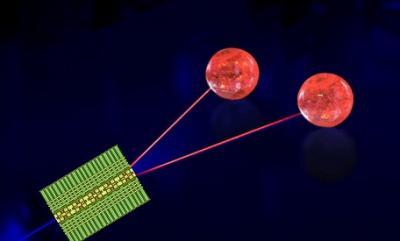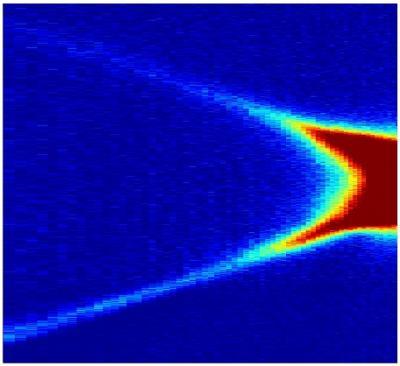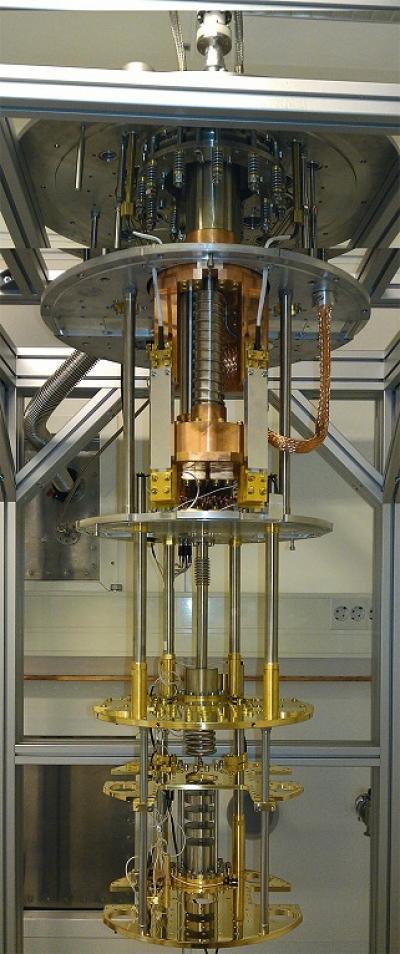The researchers conducted a mirror experiment to show that by changing the position of the mirror in a vacuum, virtual particles can be transformed into real photons that can be experimentally observed. In a vacuum, there is energy and noise, the existence of which follows the uncertainty principle in quantum mechanics.
If we act fast enough, we can prevent the particles from recombining – they will then be transformed into real particles that can be detected', says Dr. Sorin Paraoanu from Aalto University.

This is an artist's impression of the creation of an entangled photon pair, a process which is seeded by the vacuum fluctuations. The source of the pair is an actual microscope image of the chain of Superconducting Quantum Interference Devices of the metamaterial sample in which the dynamical Casimir effect was studied. The speed of light in this material could be varied by changing the magnetic field through the SQUID loops.
(Photo Credit: Aalto University)
For the experiment, the researchers used an array of superconducting quantum-interference devices (SQUID). These parts resemble devices used in imaging small magnetic fields in the brain. By changing the magnetic field, the speed of light in the device can be changed. From the standpoint of the electromagnetic field of the vacuum radiation reflecting from this kind of device experiences it as a moving mirror.

This optical microscope image shows the chain in which the dynamical Casimir effect was studied. The speed of light in this material could be varied by changing the magnetic field through the SQUID loops.
(Photo Credit: Aalto University)
By quickly varying the speed of light in the array, we can extract microwave photons out of the vacuum's quantum noise', explains doctoral student Pasi Lähteenmäki from Aalto University.
Future research directions for these kinds of devices include the creation of an artificial event horizon and observation or Hawking radiation emanating from it. The present observation will help cosmologists to get closer to the riddle of the birth of the universe and advance the development of extremely powerful quantum computers.

This image shows how the measurements were made. This open dry dilution fridge by BlueFors Cryogenics is similar to the one where the measurements for the study were made. This one is capable of reaching temperatures below 7 mK (-273.143 C).
(Photo Credit: Aalto University)
Source: Aalto University